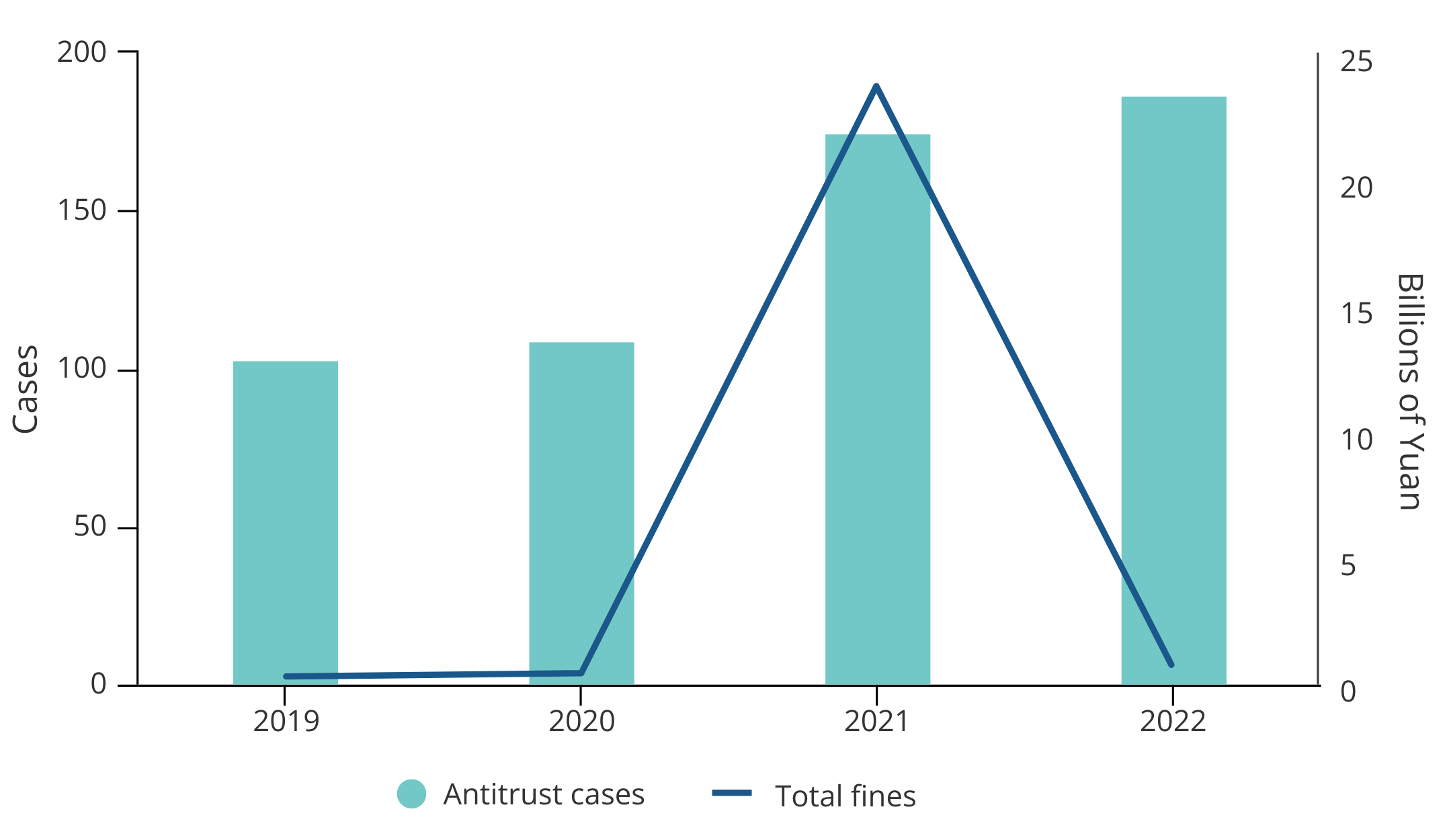- July 11, 2023 Politics
Beijing’s New Regulatory State Is Being Built One Tool at a Time
Beijing has long been dogged by the “ruler is far away” problem. In practice, it produced a model of “federalism, Chinese style” that induced hyper-competition, usually accompanied by a large helping of local protectionism, to facilitate rapid growth for decades.
Now times are a-changing. In this new era of “centralism, Xi style,” provinces need to do the center’s bidding of ensuring economic security. In other words, Beijing wants to reset the 不听话 (“intransigent”) approach that provinces adopted with gusto during the growth imperative era to one where localities are more inclined to 听话 (“follow orders”).
But resetting the organizing principle of the political economy cannot be achieved overnight. It is a herculean task that requires new institutional tools to modify the behaviors of the political class and to whip market actors in line.
That’s why General Secretary Xi Jinping’s first order of business was empowering the Central Commission on Discipline Inspection (CCDI) as an internal “Party auditor” to ensure unity behind his agenda and prevent different power bases and interest groups from forming. In his second term, a new market auditor, the State Administration of Market Regulation (SAMR), was formed. Finally, the creation of the central finance and technology commissions came early in Xi’s third term.
What has emerged is Xi’s version of a regulatory state that centralizes supervision over the Party, the market, and financial and technology risks, as well as the triumph of the CCDI model. Indeed, what these institutional tools seem to have in common is applying across the bureaucracy CCDI’s “supervise and audit” approach that it has used to great effect.
Here we look at the market auditor SAMR’s role in the regulatory state, particularly its recent evolution from the face of China’s tech crackdown to focusing on local protectionism.
Less Shock, More Awe
Created in 2018 as a ministerial-level agency, SAMR first flexed its muscle in leading the 2021 shock-and-awe actions against China’s internet giants and online tutoring companies. That regulatory storm had wiped some 5.8 trillion yuan (~$800 billion) off the market capitalization of China’s top ten internet companies in 2021.
Since then, SAMR appears to have adopted a “more bark, less bite” approach. While total fines levied by SAMR in 2022 dropped to <800 million yuan ($111 million)—a mere 3% of the 23.6 billion yuan ($3.3 billion) fines imposed in 2021—the agency recorded its highest number of audits to date (see Figure 1).
Figure 1. SAMR Conducted a Record Number of Audits in 2022  Source: SAMR’s annual antitrust reports.
Source: SAMR’s annual antitrust reports.
The collapse in fines seems related to the massive drop in cases targeting internet companies—from 60% to 18%—which were disproportionately subject to hefty fines. This implies that although the punitive regulatory storm has passed, SAMR is still keen on keeping companies on their toes by maintaining a high volume of audits. Perhaps it is no surprise that SAMR has been staffing up, likely in anticipation of increased workload.
Less Protectionism, More Unification
Much of that heavier workload will likely center on SAMR’s more pressing mandate highlighted at the 20th National Party Congress in October 2022: dismantling local protectionism to achieve a “great unified national market” (全国统一大市场) under central supervision.
Of course Xi is not the first Chinese leader to bemoan local intransigence. One manifestation of Chinese-style federalism was local governments’ tendency to protect their own fiefdoms, usually by showering preferential treatment on industries in their jurisdiction and discriminating against other market entrants.
Not only did those behaviors create local interest groups and erect barriers to entry across provinces, they also led to excess and fragmentation across industries. For instance, every local government wanted their own solar or EV champion, and firms good and bad mushroomed in these protected industries, competing on razor-thin margins. This is likely one of the factors responsible for the absence of something like a “big three” in China’s auto sector.
So to demonstrate that it is willing to walk the walk on weakening local protectionism, Beijing has enlisted SAMR as one of its main tools in this effort. In fact, Beijing laid the groundwork for this effort back in June 2022, when it amended the antitrust law to authorize SAMR to conduct systematic “fair competition” reviews (公平竞争审查) at all levels of government.
Indeed, SAMR’s evolving mandate can also be seen in the numbers. The agency handled 73 local protectionist cases in 2022 alone, up 59% from 2021. And that number is likely to increase as Beijing is expanding the scope of what constitutes “unfair” actions, including discriminatory local incentives. As if that’s not enough, SAMR is also leading a multi-agency effort to scrub obstructionist local policies that are deemed to stymie a unified market.
And what happens to obstreperous local officials who refuse to comply? Beijing’s other trusty behavior modification tool, the CCDI, will be just around the corner to discipline those officials. In fact, the 20th CCDI work report mentioned local protectionism as one of the domains it will be watching closely over the next five years.
For the Xi administration, its impulse to mop up the excesses of the local autonomy model guides its approach to regulation. To do so requires new institutional tools across the bureaucracy to align objectives—whether that means taming industry irrational exuberance, optimizing industrial policies, or curtailing market fragmentation—at all levels of government.
Ruihan Huang is a senior research associate at MacroPolo. You can find his work on elite politics, regulatory risk, policymaking, and other topics here.
Stay Updated with MacroPolo
Get on our mailing list to keep up with our analysis and new products.
Subscribe
